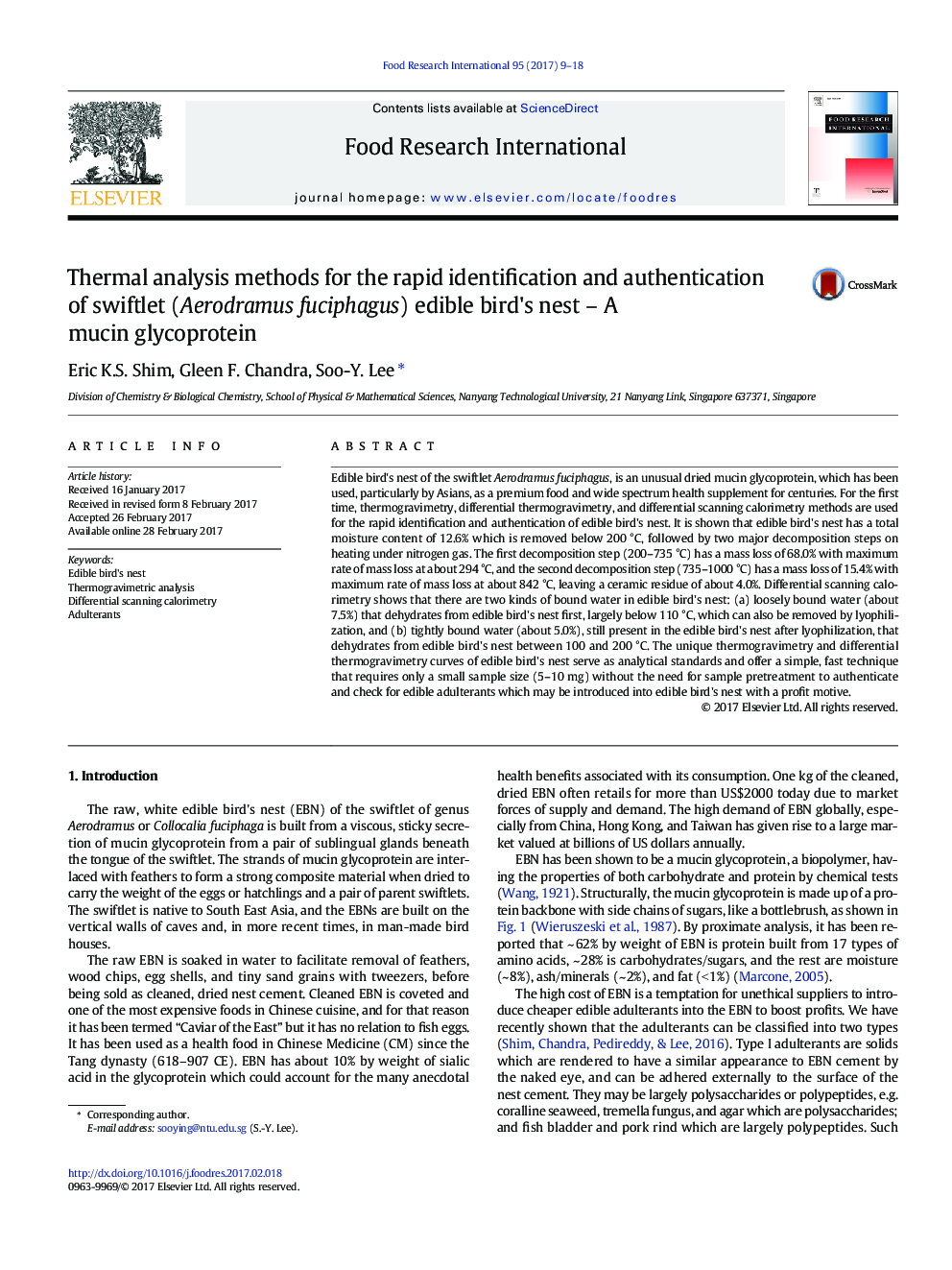| کد مقاله | کد نشریه | سال انتشار | مقاله انگلیسی | نسخه تمام متن |
|---|---|---|---|---|
| 5767912 | 1628455 | 2017 | 10 صفحه PDF | دانلود رایگان |

- TGA, DTG and DSC are performed on a mucin glycoprotein for the first time.
- EBN has unique TGA and DTG curves to be used as standards.
- There are two kinds of water in EBN - loosely bound and tightly bound water.
- Thermal analysis provides a rapid, easy to use tool to detect EBN adulteration.
Edible bird's nest of the swiftlet Aerodramus fuciphagus, is an unusual dried mucin glycoprotein, which has been used, particularly by Asians, as a premium food and wide spectrum health supplement for centuries. For the first time, thermogravimetry, differential thermogravimetry, and differential scanning calorimetry methods are used for the rapid identification and authentication of edible bird's nest. It is shown that edible bird's nest has a total moisture content of 12.6% which is removed below 200 °C, followed by two major decomposition steps on heating under nitrogen gas. The first decomposition step (200-735 °C) has a mass loss of 68.0% with maximum rate of mass loss at about 294 °C, and the second decomposition step (735-1000 °C) has a mass loss of 15.4% with maximum rate of mass loss at about 842 °C, leaving a ceramic residue of about 4.0%. Differential scanning calorimetry shows that there are two kinds of bound water in edible bird's nest: (a) loosely bound water (about 7.5%) that dehydrates from edible bird's nest first, largely below 110 °C, which can also be removed by lyophilization, and (b) tightly bound water (about 5.0%), still present in the edible bird's nest after lyophilization, that dehydrates from edible bird's nest between 100 and 200 °C. The unique thermogravimetry and differential thermogravimetry curves of edible bird's nest serve as analytical standards and offer a simple, fast technique that requires only a small sample size (5-10 mg) without the need for sample pretreatment to authenticate and check for edible adulterants which may be introduced into edible bird's nest with a profit motive.
222
Journal: Food Research International - Volume 95, May 2017, Pages 9-18